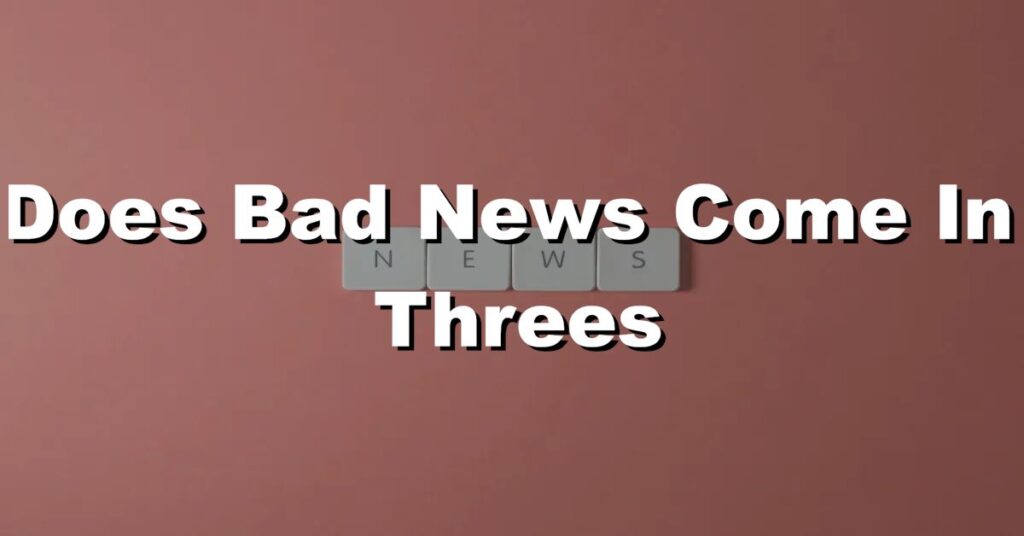“Bad news come in threes” is a phrase that has been around for decades, but is there any truth to it? This common belief suggests that when something bad happens, it is often followed by two more negative events.
In this article, we will explore the origins of this saying, the psychological reasons behind it, and whether there is any scientific evidence to support this theory.
The Concept of the “Rule of Three” in Storytelling and its Relation to News:
The “Rule of Three” is a storytelling principle that suggests things presented in groups of three are more satisfying, memorable, and impactful to audiences. This concept is often applied in various forms of storytelling, including news reporting.
In news, the “Rule of Three” can be seen in the structure of stories, where journalists often present information or events in a concise, tripartite format. This format helps in organizing complex information, making it easier for audiences to understand and remember.
Psychological Explanations for Why Bad News May Seem to Come in Threes:
The perception that bad news comes in threes is rooted in psychological processes such as pattern recognition and cognitive biases. Humans have a natural tendency to seek patterns and create meaning from random events, even when no inherent pattern exists.
When encountering a series of negative events, the brain may try to make sense of them by attributing them to a pattern, such as the “Rule of Three.” This psychological bias can lead to the perception that bad news tends to come in threes.
Historical Events Where Bad News Seemed to Come in Threes:
Throughout history, there have been instances where clusters of negative events seemed to occur in threes, reinforcing the belief in the “Rule of Three.” For example, the deaths of prominent public figures like Princess Diana, Mother Teresa, and Mahatma Gandhi occurring in relatively close succession created a perception of a “threes” pattern.
However, it is important to note that such occurrences are coincidental and do not provide evidence for an inherent pattern or universal law.
Scientific Studies Examining Whether Bad News Really Comes in Threes:
Scientific studies have explored the phenomenon of the “Rule of Three” and whether bad news truly tends to come in threes. While anecdotal evidence and personal experiences may support this perception, empirical research suggests that the pattern is more likely a cognitive bias than a universal truth.
Researchers have found that events often cluster randomly and that the perception of threes is a result of selective attention and cognitive processing rather than a predetermined pattern.
How Media Outlets May Use the “Rule of Three” to Frame Their News Stories:
Media outlets often employ storytelling techniques, including the “Rule of Three,” to frame their news stories and engage audiences. By structuring news reports around a tripartite format, they can create a sense of coherence, rhythm, and impact. The use of threes can help journalists simplify complex information, highlight key points, and make stories more memorable.
However, it is important for media outlets to exercise caution and ensure that the use of the “Rule of Three” does not oversimplify or distort the facts, as accurate and balanced reporting should remain a priority.
Conclusion
In conclusion, the concept of “bad news coming in threes” is largely a superstition with no scientific evidence to back it up. While it may seem like multiple negative events occur in quick succession, it is likely due to the human brain’s tendency to look for patterns and make connections.
It is important to remember that not all events are related and to approach each situation with an open mind.

